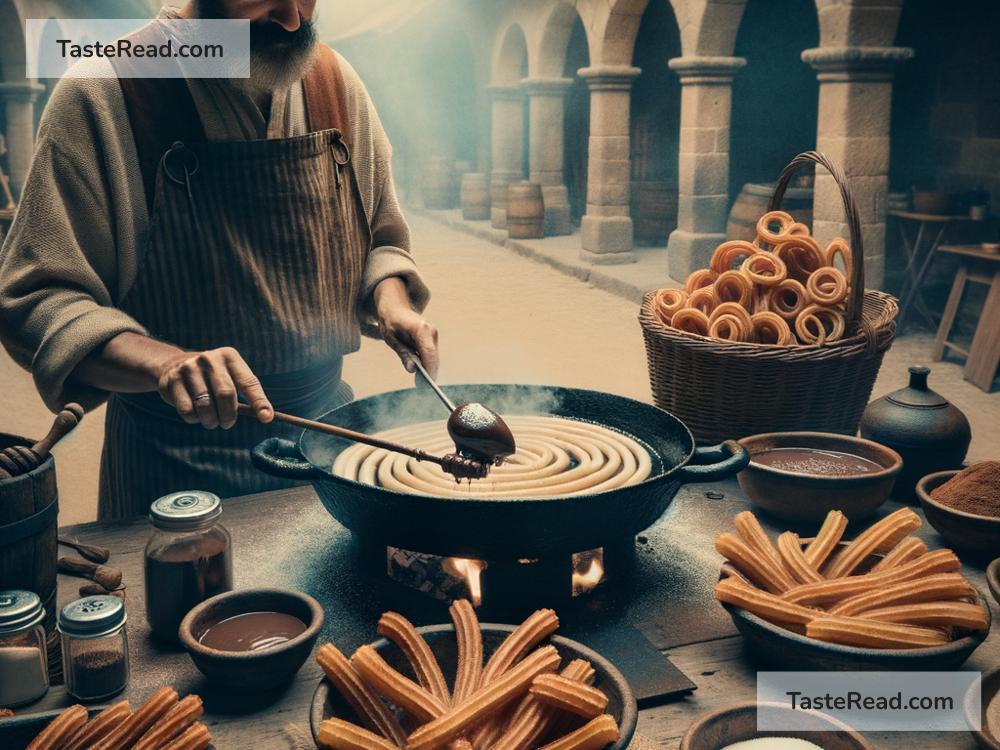The Origins of the First Churro in Folklore: A Sweet Journey
The churro is a delicious treat loved by people all over the world. Crisp on the outside, soft on the inside, and often coated with sugar or dipped in chocolate, churros are a perfect snack for any time of day. But have you ever wondered where churros originally came from? While the exact history of churros isn’t crystal clear, there are fascinating stories and folklore surrounding its origins that make this treat even more interesting to think about.
What is a Churro?
Before diving into its folklore, let’s talk about what churros are. A churro is a type of fried dough pastry, long and skinny, shaped like a stick or coil. The dough is usually simple, made of flour, water, and salt, which is then piped into hot oil, fried until golden brown, and rolled in sugar. Some variations even fill churros with chocolate, dulce de leche, or fruit sauce. Though churros are now popular worldwide, particularly in Spain and Latin America, their story goes back hundreds of years.
The Shepherds’ Snack: A Rustic Beginning?
One of the most popular explanations for the origins of churros comes from Spanish shepherds in the countryside. Long ago, during the early days of farming communities, shepherds spent a lot of time in the hills, far from towns and bakeries. They often needed easy-to-make snacks to enjoy while tending to their sheep or cattle. The answer to their problem? Simple dough.
Legend has it that shepherds would mix flour, water, and salt to make a basic dough. Without ovens to bake the dough, they developed a clever frying technique, turning what was once bland and forgettable into something crisp and satisfying. The churro dough was shaped to resemble a horn or stick, making the snack easy to hold and eat while herding animals.
Interestingly, there’s also a connection between churros and livestock in folklore. One story suggests that churros were named after the “churra,” a breed of Spanish sheep that had spiral-shaped horns resembling the pastry. Whether or not this is entirely true, the visual similarity persists and adds charm to this tale.
Cultural Influence: Did Churros Come from China?
Another theory ties the origins of churros to international trade and cultural exchange. Some historians believe churros were influenced by “youtiao,” a fried dough stick popular in Chinese cuisine. Traders traveling along the ancient Silk Road brought youtiao—or at least the idea of fried dough—to Europe. The Spanish could have adapted this idea over time and created their own version of the snack. Unlike the savory youtiao, churros were made sweeter and given their signature twist, becoming a treat loved across Spain and later across the globe.
This theory highlights how food connects cultures. Whether churros were inspired by youtiao or developed independently, it’s fascinating to think about how humans create and share recipes across vast distances.
The Sweet Rise of Churros in Spain
Folklore suggests churros didn’t just stick around in farmhouses or countryside shepherd camps for long. By the 16th century, churros found their way into Spanish cities, bakeries, and markets, becoming a hit among town folk. Celebrations and festivals often featured churros as part of their traditional spread of foods. Chocolate even entered the picture, as Spanish explorers brought cacao back from the Americas. Dipping churros in hot chocolate quickly became a beloved pairing for breakfasts, desserts, and celebrations.
It wasn’t long before churros traveled overseas, making their way to Latin America through Spanish explorers and colonizers. Each country and culture added its own twist to the churro recipe, incorporating fillings, sauces, and toppings. Mexico became particularly famous for its churros, often pairing them with rich chocolate sauce or coffee.
The Global Love for Churros
Over time, churros spread across continents. Today, you can find them sold at street food markets in Latin America, churrerías (cafes specializing in churros) in Spain, and even amusement parks in the United States. Modern variations include churros filled with cream or jelly and even savory versions, showing just how creative food lovers can be.
Though the origins of churros remain surrounded by mystery and folklore, one thing is clear: people have a talent for making simple things delicious. Whether it was shepherds frying dough in the hills, traders bringing ideas from distant lands, or bakers turning churros into a dessert celebrated by millions, the humble churro tells a story about innovation and sharing.
The Sweet Mystery Continues
Not knowing exactly how churros began is what makes them even more special. Each bite of a churro is a connection to centuries of history, storytelling, and creativity. From countryside shepherds to bustling city streets, these golden pastries remind us that food is often more than just something to eat—it’s part of who we are and where we come from.
So, the next time you enjoy a churro, take a moment to think about its journey. Whether the first churro was inspired by sheep horns, Chinese traders, or simple necessity, this snack carries centuries of sweet mystery with every bite. It’s proof that even the simplest ideas can become something unforgettable.


